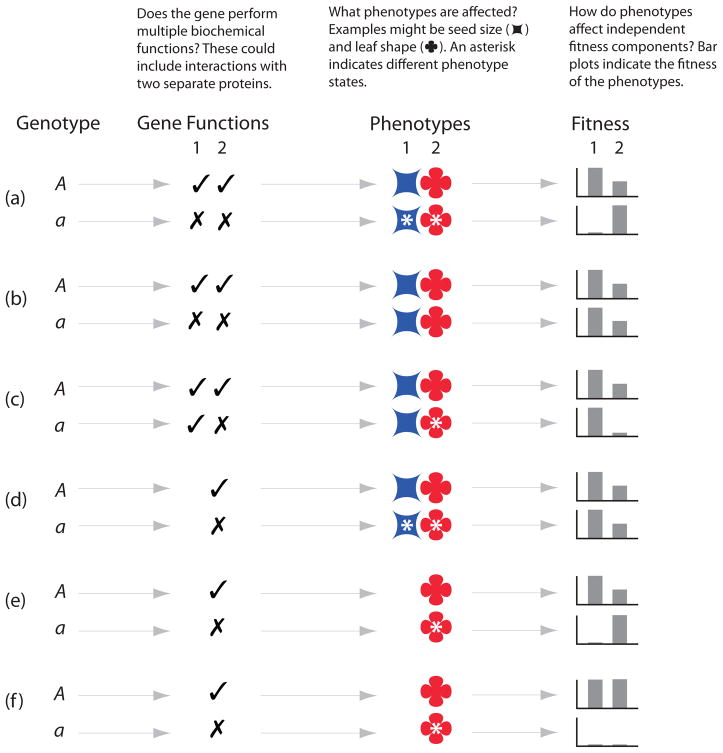Figure 1.
Different meanings of pleiotropy denote unrelated biological phenomena. Here, considering a single locus with alternate alleles (A and a) in a haploid organism, we represent genotype:gene function:phenotype:fitness mappings for alternate alleles that illustrate a few of the possible relationships. (a) Pleiotropy by all accounts. A loss-of-function mutation in a multifunctional protein abolishes two molecular activities that affect two different morphological phenotypes that in turn affect two independent aspects of fitness. (b) Molecular-gene pleiotropy occurs when a gene product carries out multiple independent biochemical functions. A gene deletion may abolish both functions, but if they are both redundant there may be no measureable phenotype (in this genetic background). (c) Genes vs. mutations: A mutation in a multifunctional gene may affect only one function, in which case this instance of molecular-gene pleiotropy does not correspond to any developmental or selectional pleiotropy. (d) Developmental pleiotropy occurs when a mutation affects two aspects of phenotype. This phenomenon does not require any multifunctionality at the level of the molecular gene nor any particular pattern of impact on fitness. (e) A mutation that affects only a single phenotype may nevertheless yield selectional pleiotropy if the phenotype has varied effects on fitness in different circumstances –different environments or sexes, for example. (f) Perhaps the least intuitive case is a mutation that affects only a single phenotype and has identical effects on orthogonal fitness components. Because these fitness components are independent traits in the selectional context, a mutation with uniform effects on more than one is necessarily pleiotropic.

